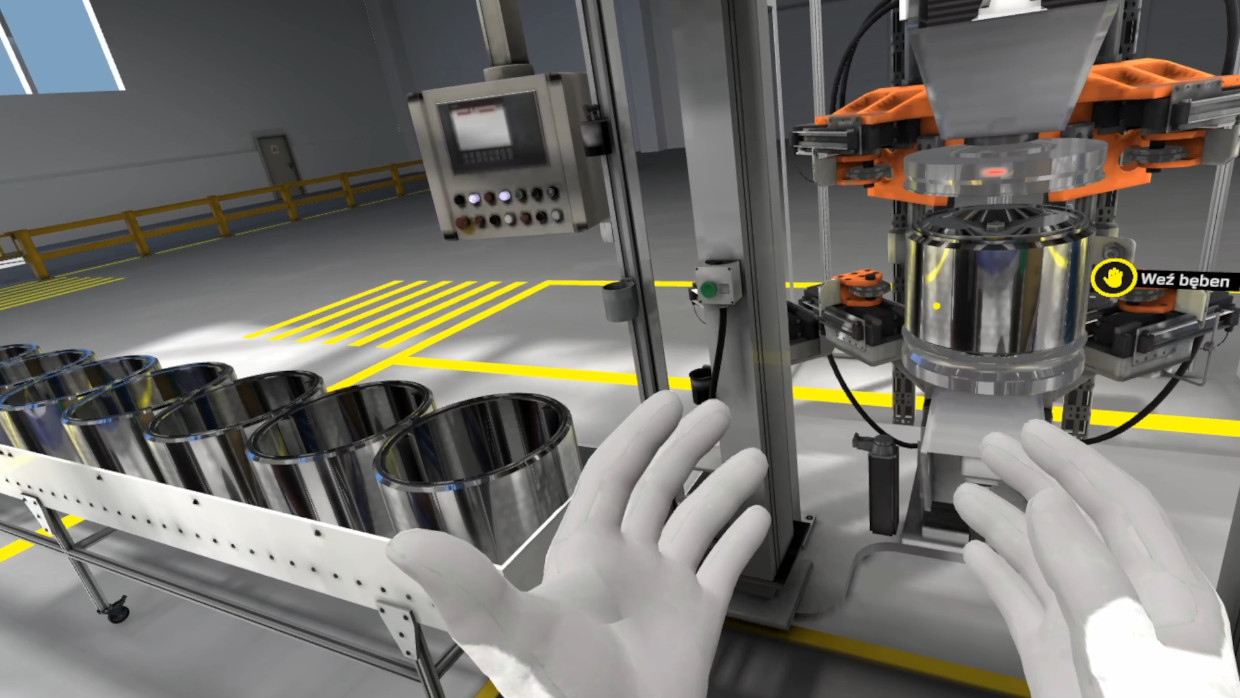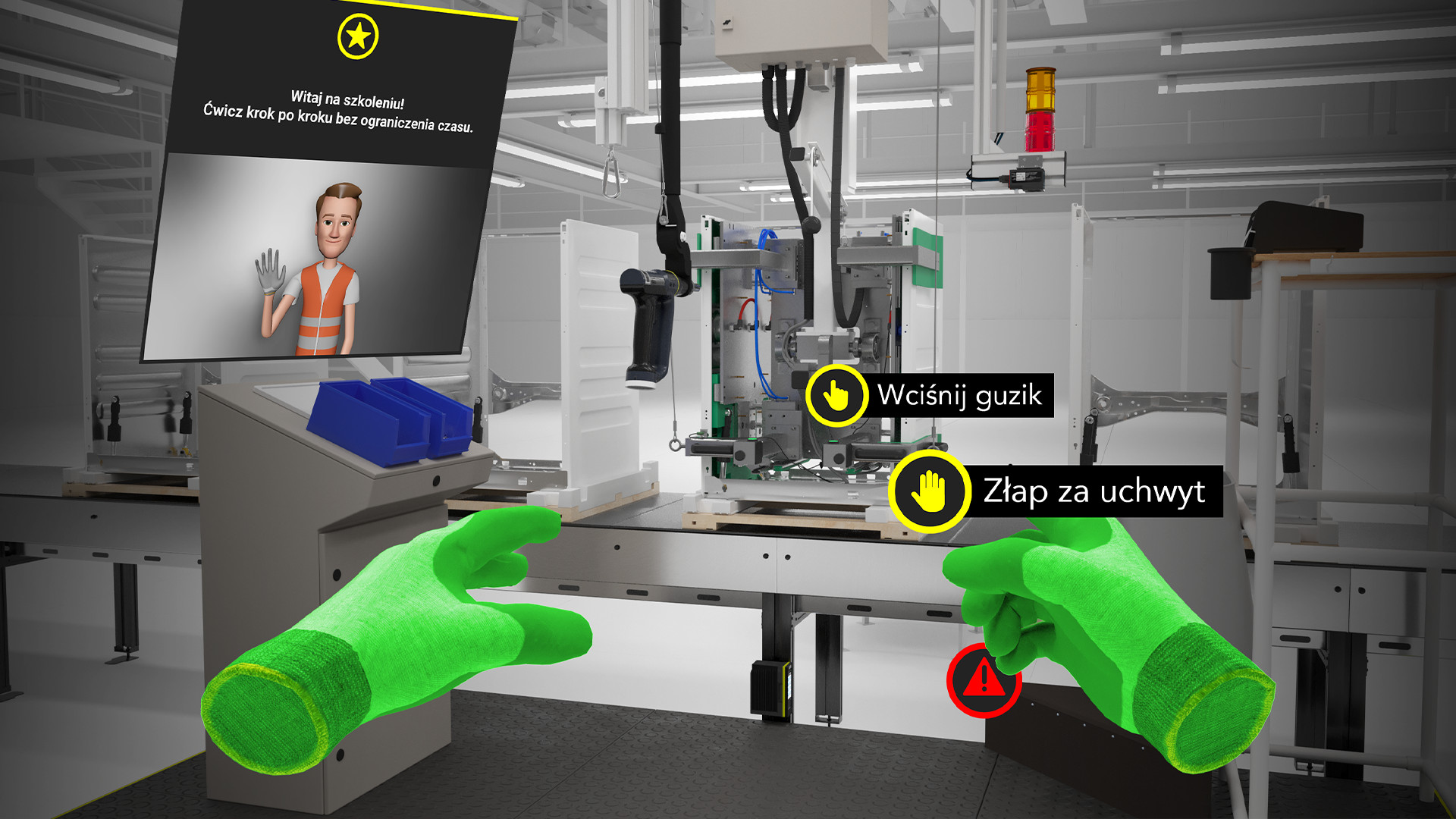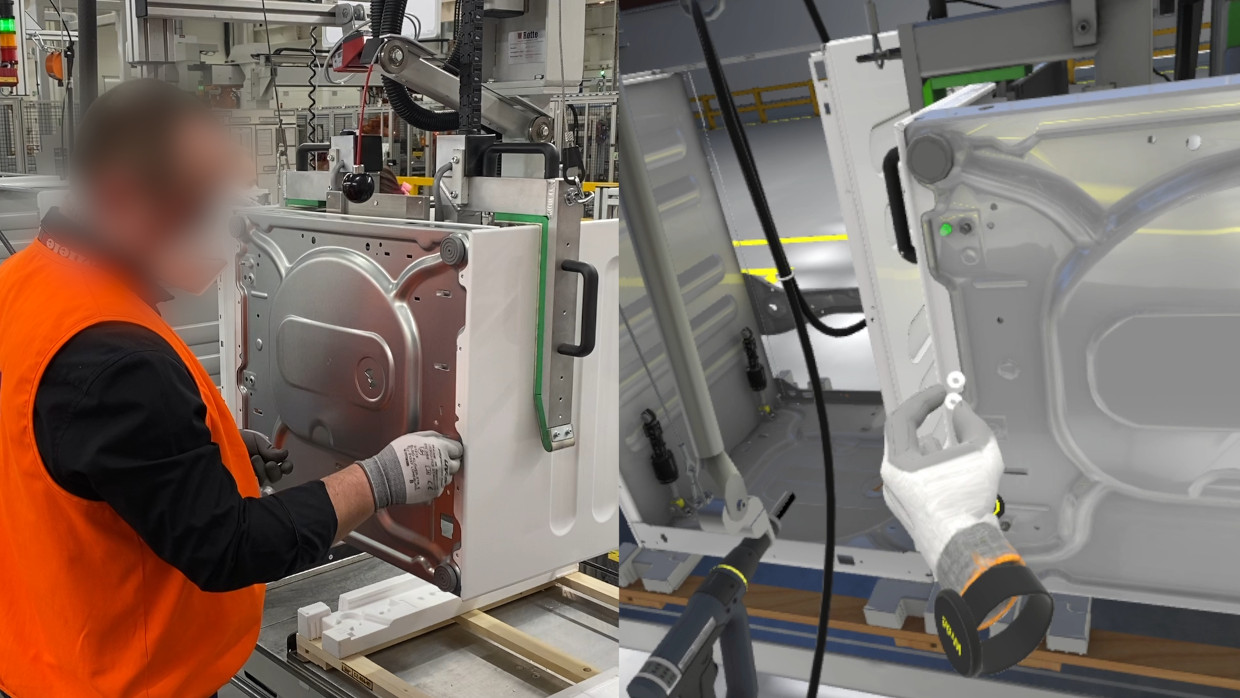Client:
Electrical industry, international manufacturer of home appliances MIELE
Product:
Knowledge transfer, knowledge management, development of digital competencies
Download PDF:
xxx
Miele VR Training Academy Revolutionizes Industrial Learning and Safety
The Miele VR Training Academy, developed by Connected Realities in partnership with Miele, epitomizes innovative approaches to traditional training challenges in the manufacturing industry. Using advanced VR technology, it forms a safe, engaging, and efficient training environment that greatly improves learning experiences and operational safety. This project is distinguished by its successful integration of digital twin technology with VR training, which proposes new standards in industrial training practices and showcases progressive solutions.
It’s important to remember that VR training is one of the areas most frequently invested in by enterprises, when looking across the spectrum of investments in virtual technologies. VR training is also one of the most researched areas in terms of its effectiveness for industry use. That’s why it’s so important for you to learn the details of the training project for Miele, as it directly demonstrates the huge role of VR solutions in modern processes of tailored knowledge transfer.
Short project description:
Miele, a global manufacturer in the appliance industry, has implemented a VR training program to enhance knowledge transfer and manage competencies digitally. They’ve created a series of practical, interactive VR training sessions that standardize knowledge and provide training for any production position without disrupting production lines. The user’s task is to learn the operation of various workstations that represent the complete production cycle of a device. VR influences the speed of skill acquisition by allowing the immediate application of knowledge in practice. The solution fits into compact VR goggles, enabling trainings to take place anywhere without halting production lines. This is Miele’s first such implementation globally, created in partnership with Polish company Connected Realities, specializing in bespoke VR, AR, and Metaverse solutions for large corporations.
What need does the solution address?
The challenge was the need for modern training methods that adjust to the high turnover of younger employees, the retirement of experienced workers along with their knowledge accumulated over years, and ongoing updates in technology and production procedures. Traditional training disrupts production lines and involves key employees and trainers in the knowledge transfer process.
The challenge:
Key challenges included overcoming language barriers, difficulty maintaining uniform attention levels across trainees, especially in groups, and the high costs of errors leading to machine damage or safety hazards. The VR project should not only meet immediate training needs but also provide a basis for the continuous adaptation of the company and its employees in the face of rapid technological advances.

Idea description:
The idea was to create the “Miele VR Academy,” a digital replica of physical workstations where training can be conducted in an engaging and safe manner. For the VR trainings, five key workstations were digitally recreated as interactive virtual machines and devices operating just as they do in the physical world. The selection of workstations to be replicated in virtual reality was based on several factors: • The significant number of errors made by employees at the actual workstation, • The inability to recreate the workstation in a training center due to its large size, • Different workstations operated by the same employee.
Implementation:
By donning VR goggles, the employee is transported to a virtually replicated workstation complete with necessary machines and devices. The virtual workstation operates exactly like the physical one, providing realistic visual and auditory experiences. Users freely move and perform tasks mimicking reality. Instructions for operating the workstation and verifying the employee’s acquired knowledge are automatically delivered in an engaging, multimedia format. With digital delivery, knowledge is conveyed through multiple stimuli such as visual and audio signals, indicating correct actions or errors. If an error is made, its consequences are also shown in virtual reality, such as damaging a machine and halting the production line. Helpful tips, textual information, and graphical markings displayed at appropriate places on the digital workstation help trainees recognize tools, understand machine functions, and learn the sequence of operations. We also use a narrator, allowing the trainings to be available in any language. Training scenarios were developed during workshops with trainers, safety instructors, and employees with extensive practical knowledge. After reaching an agreement on the standard and formula for delivering instructions, these formed the basis for developing the virtual version of the training. The goal is to maximize the VR user’s autonomy in acquiring knowledge. VR training allows it to be conducted in three modes: • Training with instructions (learning), • Training without instructions (independent practice), • Examination (operating the workstation considering the time parameter in which the trainee should flawlessly complete all tasks). The VR application also allows for the registration of user progress and its detailed analysis (for example, the most difficult elements, the most common errors, time).
Results:
What value does the ability to learn freely to effect without consequences bring to the trainee? This opportunity is provided by VR training, where the employee receives an unlimited number of training session repetitions. They also gain greater control over the training process thanks to the ability to choose its mode and sequence. Since VR involves physically handling the workstation akin to the actual one, muscle memory, combined with contextual experience, accelerates the learning process. The mobility of VR technology allows training to be conducted at any time and place, avoiding disruption of the production line. If we want to increase the number of trainees simultaneously, we simply add more VR stations, and thanks to standardized scenarios, we minimize the involvement of experienced employees in the training process. Current challenges require companies to have an individual and flexible approach to employee education to ensure effective and efficient training. Virtual reality can improve work quality by reducing the number of errors and increasing efficiency due to the mobility and repeatability of VR solutions. The next step is to test our VR training solutions, which we will tailor to the specific needs of your company. Feel free to contact us.



